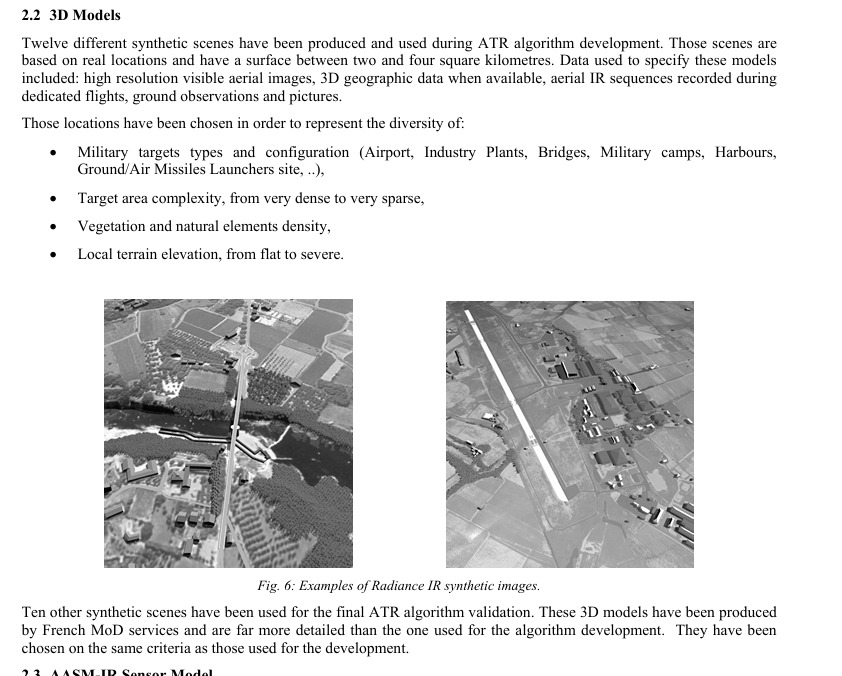Mental Gymnastics is taking one small snippet as gospel, bro, when the same company claims different things all the time that don’t even really contradict it
The trajectory should be shaped similar to the AGM-45 & basic- JDAM ( minimum impact angle of ~60 degrees).
not that it matters much because a hammer fired low and long range will arrive with an angle of ~20° and one fired high and far will arrive with an angle of ~135° currently in game
Hellfire Moment
It seems like thrust is lacking on AASM as a GBU-24 will reach its target before a simultaneously launched AASM will. Considering how overpowered Pantsirs are right now and how proficient they are at intercepting ammunition, I thus personally find myself using GBUs instead of laser AASMs because of that.
Honestly with how easily S1s intercept munitions, firing both is probably better than 2 AASMs. At least their separate trajectories will make it more difficult to hit them in time.
GBU-24 is flying directly to the laser, AASM is lofting and taking a less direct route. This is expected.
You can see in the distance travelled, GBU-24 was ~6.5km from release to impact with a direct trajectory, where as AASM was ~7.2km with a lofted trajectory…
Eee, no. Unless there are more things in the air, it will not a a problem for pantsir, it will launch 2 missiles in auto mode, and do nothing else. There have to be at least 5 things in the air to start overwhelming semi competent pantsir player.
If the AASMs were to employ the vertical drop, it will become an issue, as the radar reaches only 75 degree (iirc) up, above that it is one missile at a time without the TWS box (that is if it is not intercepted on the way).
Has the lack of lofting on the GBU-24 been reported?
I mean obviously the trajectory is to blame for it. The issue is that while GBU-24 gets up to Mach 1.0 when impacting the target, the AASM only reaches Mach 1.05.
Is this the kind of speed you would expect from a boosted bomb free falling on a target at an angle higher than 60° ? I don’t think so.
So my guess is either drag is too high or thrust is underperforming on AASM.
Terminal velocity for a 2000lb weapon is roughly around mach 1.0-1.05 ~ I’d expect a small weapon based on a MK.82 to be around mach 0.9 ~, most of its boost duration is used to loft it over the target area. So yeah 1.05 mach would be about right. Considering you launched at mach 0.85 as well, so the AASM needed to also accelerate up to 1.05 mach while performing a loft.
But on the other hand the AASM is lacking quite a significant amount of range, which is probably attributed to overall drag, as the boost time is correct (and the thrust should be somewhat close to reality as well). The terminal velocity should be impacted quite a lot by the aerodynamic of the bombs, with the AASM kit having a significantly different aerodynamical profile compared to dumb bombs
i’ll play the devil advocate here, but where have you guys seen that the AASM is lacking range ?
There are sime things wrong with this missile, like the weird trajectory for high and far shots, and the lack of loft on a low altitude shot, but range wise it seems quite correct.
And it’s not like range matters that much, since the missile takes a whole business week to arrive when fired from that far
The AASM max range is 80km from high altitude launches, and it falls at around 50km iirc (15km launch supersonic), meaning it’s missing about 35% of its range, which would be achieved with lower drag overall
In the AASM IR paper, it is supposed to recognize scenes that has a surface area of between 2 and 4 square kilometers. Using these scenes it was used to develop the ATR algorithms.
you mean this part?

We know 3 things so far from primary sources.
We know that the maximum launch speed is Mach 1.4:
Spoiler

We also know that the maximum launch altitude is 40,000 feet:
Spoiler

So given those 2 sources, we can conclude that the maximum range should be obtained at the maximum altitude of 40,000 feet with the maximum launch speed of Mach 1.4.
So what is the maximum range? The 1,000kg variant is supposed to achieve 70km while the 125kg variant is supposed to achieve 90km. We have the 250kg variants:
Spoiler


Testing it by doing Mach 1.4 and 40,000 feet. The maximum range was 66km. We know that the burntime is correct so they either have to reduce drag (improbable) or they have to increase thrust:
Spoiler

AASM Hammer does not have enough range // Gaijin.net // Issues
Yes, the IR algorithms was developed with different scenes in mind and be able to recognize similar markers of where they may be able to find a target is how I understood it from this paper and other brochures.
I gave that a read.
If I’m honest with you, the 2x2 or 4x4 is not a metric like that. As the document itself says, these were sizes used in development. The system might be locked to them, might be able to work on bigger, might be locked to smaller (imo 2x2 and 4x4 seem fine, so I will stick with that)
The thing is, recognize =/= see. It means that if it sees something within the pre prepared square it should recognize it. So it does not provide a seeker FoV, just the area where algorithm knows where it is.
Ofc it might be scanning the whole 4x4 area, but the document does not show this, unless I missed something.



